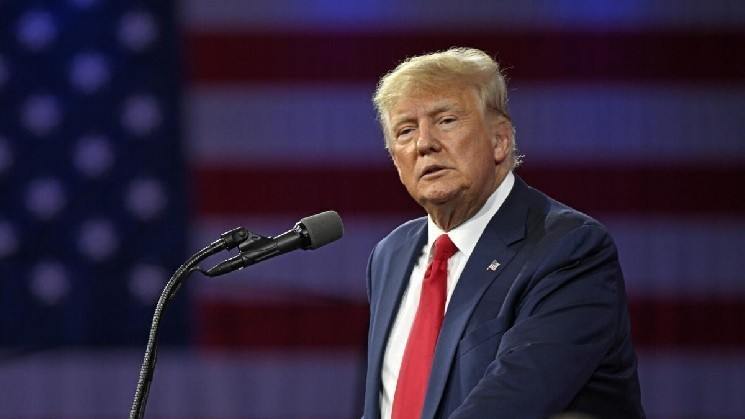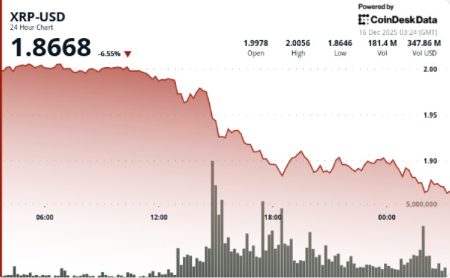Trump Softens Stance on China Following Tariff Threats, Signaling Diplomatic Reset
President Offers Conciliatory Message After Market Turbulence and Chinese Backlash
In a striking pivot from his confrontational rhetoric just days earlier, U.S. President Donald Trump extended an olive branch to China on Sunday through his Truth Social platform, attempting to ease tensions that had rattled global markets and threatened to derail scheduled diplomatic engagements. “Don’t worry about China, everything will be fine! The respected President Xi just had a bad moment. He doesn’t want his country to fall into a recession, and neither do I. The US wants to help China, not hurt it!” Trump wrote, marking a significant tonal shift in what has become an increasingly volatile relationship between the world’s two largest economies.
This conciliatory message comes on the heels of Trump’s Friday declaration that he would consider imposing sweeping 100% tariffs on Chinese imports—a threat that sent immediate shockwaves through international financial markets and diplomatic circles alike. The abrupt rhetorical swing from confrontation to cooperation has become characteristic of Trump’s approach to international relations, particularly with China, leaving analysts and investors struggling to anticipate the administration’s next moves in this high-stakes economic relationship. Market observers note that such unpredictability has become a defining feature of U.S.-China trade dynamics under Trump’s presidency, creating challenges for businesses attempting to navigate global supply chains and investment strategies.
Beijing’s Firm Response and Market Fallout
The Chinese government had responded forcefully to Trump’s tariff threats, with the Ministry of Commerce in Beijing labeling them a “typical example of US double standards” and explicitly warning of potential “countermeasures” should the administration proceed with implementing the punitive economic policies. The diplomatic exchange had quickly escalated when Trump specifically identified China’s recent restrictions on rare earth exports—critical minerals essential to many high-tech manufacturing processes—as a “hostile move” against American interests. The confrontation reached such intensity that the President had publicly suggested he might withdraw from a planned high-level meeting with Chinese President Xi Jinping later this month, raising concerns about further deterioration in the bilateral relationship at a time when global economic stability appears increasingly fragile.
The market reaction to this escalating trade tension was immediate and pronounced. The S&P 500 index closed last week with a steep 2.7% decline, its worst performance since April, as investors grappled with the potential implications of renewed trade hostilities between the United States and China. The volatility sent ripples through global commodity markets as well, with particular concern focused on industries dependent on complex international supply chains that could be disrupted by new tariff regimes. Financial analysts have cautioned that prolonged trade uncertainty could further dampen business confidence and capital expenditure plans, potentially creating headwinds for economic growth at a time when many economies are already contending with inflation pressures and monetary tightening.
Strategic Implications for U.S.-China Relations
Trump’s rapid shift from confrontation to conciliation highlights the complex calculations underlying U.S.-China relations, where economic interdependence coexists with strategic competition across multiple domains. The President’s latest comments suggest an awareness that while trade leverage remains an important tool of American foreign policy, pushing too aggressively risks triggering retaliatory measures that could harm U.S. economic interests as well. China’s position as both a manufacturing hub and growing consumer market means that American businesses have substantial exposure to Chinese market conditions, creating constituencies within the United States that favor stability in the bilateral relationship despite broader concerns about competition and security.
The reference to helping rather than hurting China represents a notable departure from rhetoric that has often characterized China primarily as an economic rival or strategic competitor. By acknowledging shared interests in avoiding recession, Trump appears to be signaling that economic cooperation remains possible even amid competition in other areas. This pragmatic recognition of economic interdependence suggests that while the administration may continue to pursue policies aimed at addressing specific concerns about trade practices or technology transfer, it remains cognizant of the potential costs of unrestricted economic confrontation. Policy experts note that finding this balance—addressing legitimate concerns about fairness and reciprocity while maintaining functional economic ties—represents one of the central challenges in managing the U.S.-China relationship.
Rare Earth Minerals and Strategic Supply Chains
At the heart of this recent diplomatic tension lies the increasingly critical issue of rare earth minerals—a group of 17 elements essential to the production of everything from smartphones to military equipment. China’s dominant position in global rare earth processing has become a source of strategic concern for U.S. policymakers, particularly as technological competition intensifies. When Trump specifically identified China’s export restrictions on these materials as a “hostile move,” he highlighted growing American awareness of supply chain vulnerabilities in critical sectors. The administration has previously identified reducing dependence on foreign sources for strategic materials as a national security priority, making the rare earth dispute more than just an ordinary trade disagreement.
Industry analysts suggest that this focus on supply chain resilience will likely persist regardless of near-term fluctuations in diplomatic rhetoric. American and European initiatives to develop alternative sources for critical minerals, including rare earths, have accelerated in recent years as part of broader efforts to reduce strategic dependencies. Companies across multiple sectors, from automotive to electronics to defense, have begun reevaluating their supply chain exposures and exploring diversification strategies. This structural shift toward supply chain resilience represents a longer-term trend that may continue even if the immediate tensions in U.S.-China relations subside, reflecting a broader reassessment of globalization patterns in which economic efficiency is increasingly balanced against considerations of security and reliability.
Outlook for Upcoming Diplomatic Engagement
As President Trump now signals willingness to proceed with the planned meeting with President Xi, attention turns to what such an engagement might accomplish in stabilizing the relationship. Diplomatic sources suggest that both sides have incentives to demonstrate progress on trade issues, with China concerned about maintaining export markets amid domestic economic challenges and the U.S. administration mindful of market reactions to trade uncertainty. The upcoming meeting, if it proceeds as planned, could provide an opportunity to establish clearer parameters for economic competition and identify potential areas for cooperation on shared challenges ranging from global economic stability to climate change.
However, observers caution that the fundamental structural tensions in the relationship—spanning trade practices, technological competition, and geopolitical influence—remain largely unresolved. While diplomatic engagement may help manage immediate crises and prevent uncontrolled escalation, addressing these deeper issues will likely require sustained dialogue and policy innovation from both sides. The economic interdependence that Trump acknowledged in his latest statement both complicates and necessitates this effort, creating shared exposure to economic disruption while also providing incentives for finding workable compromises. As global markets continue to monitor developments closely, the coming weeks will reveal whether this latest conciliatory gesture represents a genuine recalibration of the administration’s approach or merely a temporary pause in what has become an increasingly complex and consequential relationship between the world’s largest economies.













